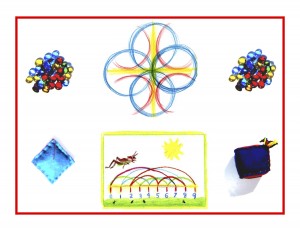Day 151
For one year, 365 days, this blog will address the Common Core Standards from the perspective of creating an alternate, ambient learning environment for math. Ambient is defined as “existing or present on all sides, an all-encompassing atmosphere.” And ambient music is defined as: “Quiet and relaxing with melodies that repeat many times.
Why ambient? A math teaching style that’s whole and all encompassing, with themes that repeat many times through the years, is most likely to be effective and successful. Today’s post will begin reviewing the Common Core ELA standards, moving through them more quickly than the Common Core math standards. The standards will be posted in groups of three to five in blue, followed by their ambient counterparts.
English Language Arts Standards > Reading: Foundational Skills > Grade 2
Fluency:
Read with sufficient accuracy and fluency to support comprehension.
CCSS.ELA-LITERACY.RF2.4.A
Read grade-level text with purpose and understanding.
No direct reading as yet most likely, but the literature is way above grade-level complexity and content. Stories are told, retold, and related to academic lessons, so academics are concretized rather than abstracted, and anchored within a form and language spoken and understood by the child at this age. This may be seen as a secondary purpose (aside from the lofty purpose of the story itself), and a deeper understanding of both is obtained and enhanced by the joining of story and academics.
CCSS.ELA-LITERACY.RF2.4.B
Read grade-level text orally with accuracy, appropriate rate, and expression on successive readings.
Instead of reading orally, above-grade-level texts are retold with complex detail and total accuracy. The quality of imitation is still strong at this age, which may be thought of as a survival tool, until the child is strong and grown enough to take life on independently. We adults are the role models, quite literally, and we take that on willingly when we recognize that our children are not ready to think, reason, or act independently until age 11 or 12. We give them stories extracted from our collective cultural development, and then the children faithfully retell these stories with accuracy, appropriate rate, and expression, successively.
CCSS.ELA-LITERACY.RF2.4.C
Use context to confirm or self-correct word recognition and understanding, rereading as necessary.
Context is given as the story remains present throughout, whole and intact. Self-correction is minimal because the powers of imitation hold and remember the story deeply, so it remains present lifelong, as a faithful resource and source of inspiration. Understanding is thorough and consistent throughout. Reading occurs at the optimal time, leaping into complex chapter books while foregoing watered-down “grade-level” texts. Now is a good time to restate that my daughter, who attended Waldorf schools from grades 1-8, didn’t read independently until late third grade. She now reads voraciously as a doctoral candidate at Cal Berkeley. Have faith, and wait. Your child will shine, brilliantly when the time is right.
Knowledge ensues in an environment dedicated to imaginative, creative knowing, where student and teacher alike surrender to the ensuing of knowledge as a worthy goal. Tune in tomorrow to continue with the Common Core ELA standards and their ambient counterparts.












